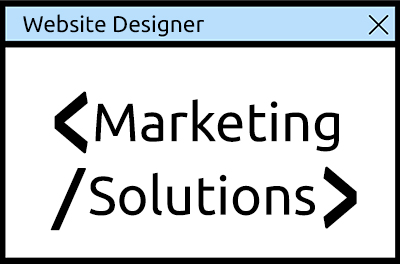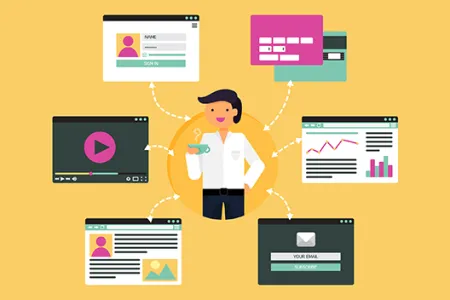Have you ever visited a website that made you want to stay for hours just because of its fascinating user experience? In the digital world, your website is your online storefront and creating an exceptional user experience can make all the difference in building brand loyalty, driving conversions, and increasing customer satisfaction. In this blog post, we’ll delve into what makes a great user experience and share some tips on how to take your website visitors on a journey they won’t forget! So buckle up and get ready to explore the power of user experience with us.
What is User Experience and How Does it Impact Your Business?
User experience (UX) is the process of how a person feels when interacting with a system. It encompasses all aspects of the end-user’s interaction with the company, its services, and its products.
Good UX leads to happy customers who will keep using your products or services and tell others about their great experience. By contrast, poor UX can frustrate and alienate users, leading them to take their business elsewhere. Even if your product or service is the best on the market, if your UX is bad, customers will go elsewhere.
There are many factors that contribute to good UX, such as ease of use, perceived value, aesthetic appeal, and so on. However, one of the most important factors is overall customer journey. Take some time to map out your customer’s journey from start to finish. What steps do they need to take in order to use your product or service? Are there any places where they might get frustrated or confused? By mapping out the customer journey, you can identify areas where you can improve the UX and make it more seamless.
User experience is incredibly important for businesses of all sizes. Good UX can help you acquire and retain customers, while bad UX will do just the opposite. By taking some time to map out the customer journey and identify areas for improvement, you can create a better experience for your users and improve your bottom line in the process.
The Benefits of Optimising User Experience on Your Website
When it comes to user experience, first impressions matter. Your website is often the first point of contact between you and your customers, so it’s important to make sure that your site is designed with the user in mind. Optimising your website for a better user experience can lead to more engaged visitors, higher conversion rates, and increased customer satisfaction.
Here are just a few of the benefits of optimising your website for a better user experience:
1. Reduce bounce rates and increase time on site
If visitors to your website have a positive experience, they’re more likely to stick around. On the other hand, if they find your site difficult to use or navigate, they’re more likely to click away – known as a “bounce.” By improving your website’s user experience, you can keep visitors on your site longer and reduce bounce rates.
2. Increase conversions and sales
A positive user experience can also lead to increased sales and conversions. If visitors to your site can easily find what they’re looking for and complete tasks such as making a purchase or signing up for a newsletter, they’re more likely to convert into customers or leads.
3. Improve search engine rankings
Search engines like Google take user experience into account when ranking websites in their search results. This means that optimising your site for better UX can also help you improve your search engine rankings and get more organic
Elements of a Successful UX Design
What makes for a successful UX design? A good starting point is to think about the goals of your users, and what they need to do on your site or app. Then, you can design around those goals, keeping in mind the following key elements:
-A clear navigation system that helps users find what they’re looking for easily
-High-quality content that is relevant and useful to them
-An engaging and visually appealing design
-Fast loading times and a smooth user interface
-Easy ways to contact you if they need help or have questions
Keep these things in mind as you work on your UX design, and you’ll be well on your way to creating a successful website or app that your users will love.
Tips to Improve Navigation and Visitor Engagement
If your website’s navigation is confusing or difficult to use, visitors are likely to give up and go elsewhere. Improving your site’s navigation can help reduce frustration and improve engagement. Here are some tips to help you get started:
– Simplify your navigation menu. Organise items in a way that makes sense and is easy to understand.
– Use clear and descriptive labels for each link. Avoid using generic terms such as ‘click here.’
– Make sure all links lead somewhere. broken links can be frustrating and discourage visitors from exploring your site further.
– Use consistent styling throughout the site. This will help visitors feel comfortable and confident using your site.
– Allow visitors to search your site. This can be a helpful way to find information on a large or complex website.
How Can You Track User Behaviour?
You can track user behavior in a number of ways, including using heatmaps, session recordings, and analytics tools. Heatmaps show you where users are clicking on your website, session recordings let you replay what users do on your website, and analytics tools give you insights into how users are using your website. By tracking user behavior, you can learn what works well on your website and what needs improvement.
Conclusion
Creating a positive user experience for website visitors is essential to ensure that users have an enjoyable time on your site, are able to easily find what they’re looking for and ultimately trust the brand you represent. By using simple design principles, creating engaging content and listening to feedback from users along the way, you can provide a truly world-class user experience in which customers will be more likely to explore your website and return again in the future. With the right approach, it’s possible to provide unforgettable experiences with every visit and grow your company as a result.





